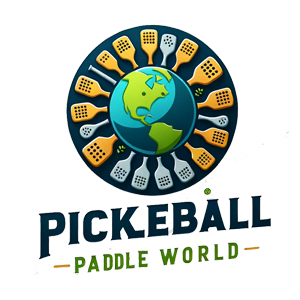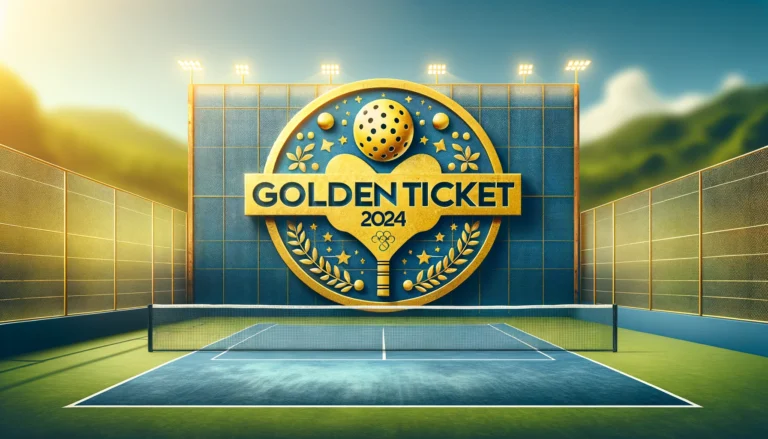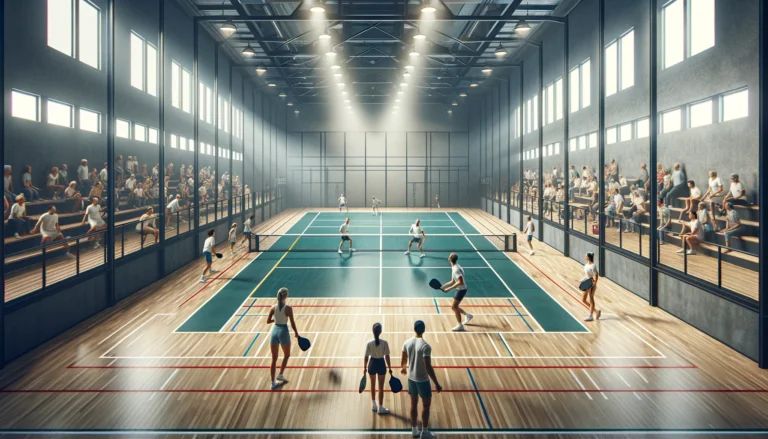Pickleball Rules for Kids: A Comprehensive Guide for Fun and Fair Play
Pickleball Rules for Kids
With its easy-to-learn rules and minimal equipment, it’s a fantastic game for children. In this blog post, we’ll delve into the essential pickleball rules for kids, ensuring that young players can enjoy the game safely and fairly.
We will cover the basic rules of pickleball, modified rules to suit kids, and tips to make the game more enjoyable for young players. By the end of this post, you’ll have a clear understanding of how to introduce and teach pickleball to children effectively.
This guide will provide valuable insights for parents, coaches, and educators looking to engage kids in a fun, active sport. From understanding the court layout to mastering the serve, this comprehensive guide covers everything you need to know about pickleball rules for kids.
Understanding the Basics of Pickleball
What is Pickleball?
Pickleball is a paddle sport that blends elements from various racket sports. It can be played indoors or outdoors on a badminton-sized court with a slightly modified tennis net. The game is played with a perforated plastic ball and paddles. Players can participate in singles or doubles formats, making it a versatile sport for different group sizes.
Basic Rules of Pickleball
To ensure kids grasp the game quickly, it’s important to start with the basic rules:
- The Serve: The serve must be hit underhand, with the paddle contacting the ball below the server’s waist. The serve is made diagonally crosscourt and must land within the confines of the opposite diagonal court.
- Scoring: Points can only be scored by the serving team. Games are typically played to 11 points, and a team must win by 2 points.
- Double Bounce Rule: The ball must bounce once on each side before players can volley (hit the ball in the air without a bounce).
- Non-Volley Zone: Also known as the “kitchen,” players cannot volley the ball within 7 feet of the net.
Benefits of Pickleball for Kids
Pickleball offers numerous benefits for children, including physical fitness, hand-eye coordination, and social interaction. The game’s simple rules and small court size make it accessible for kids of all ages. Additionally, playing pickleball can help kids develop teamwork and strategic thinking skills.
Modifying Pickleball Rules for Kids
Simplifying the Game
For younger children, simplifying the rules can make pickleball more enjoyable and easier to understand. Consider these modifications:
- Lower the Net: Adjusting the net height can make it easier for kids to serve and return the ball.
- Smaller Court: Use a smaller court size to reduce the amount of running and make the game more manageable for younger players.
- Lighter Equipment: Provide lightweight paddles and balls to suit children’s physical capabilities.
Rule Adjustments for Beginners
Introducing rule adjustments can help beginners grasp the game:
- Relaxed Serve Rules: Allow underhand serves without strict adherence to the waist rule.
- Scoring Flexibility: Play to fewer points, such as 7 or 9, to maintain engagement and excitement.
- Eliminate the Double Bounce Rule: For very young players, allowing volleys from the start can keep the game dynamic and fast-paced.
Safety Considerations
Ensuring safety is paramount when kids are playing pickleball. Here are some tips:
- Proper Warm-Up: Encourage kids to warm up before playing to prevent injuries.
- Court Safety: Make sure the playing area is free of hazards and the surface is appropriate for running.
- Supervision: Always supervise young players to ensure they follow the rules and play safely.
Teaching Pickleball to Kids
Introducing the Game
When teaching pickleball to kids, start with a fun and engaging introduction:
- Demonstration: Show kids how the game is played by demonstrating serves, rallies, and basic shots.
- Interactive Learning: Use interactive methods such as mini-games and drills to teach the basic skills.
Skill Development Drills
Incorporate drills that focus on fundamental skills:
- Serving Drills: Practice underhand serves, aiming for consistency and accuracy.
- Rally Drills: Pair kids up and have them practice rallies, focusing on control and keeping the ball in play.
- Footwork Drills: Teach proper footwork and positioning to help kids move efficiently on the court.
Encouraging Team Play
Promote teamwork and cooperation through doubles play:
- Partner Rotation: Frequently rotate partners to help kids learn to play with different teammates.
- Communication Drills: Encourage kids to communicate during play, which can improve teamwork and strategy.
Fun Variations of Pickleball for Kids
Pickleball Challenges
Introduce fun challenges to keep the game exciting:
- Serving Accuracy Challenge: Set up targets on the court for kids to aim at during serves.
- Longest Rally Challenge: Encourage kids to see how long they can keep a rally going without missing a shot.
Pickleball Games
Incorporate different game variations:
- Around the World: Kids rotate positions around the court after each shot, promoting movement and quick thinking.
- King of the Court: One player stays on the court while challengers try to win a point to take their place.
Seasonal Pickleball Themes
Use seasonal themes to make the game more engaging:
- Holiday-Themed Games: Incorporate holiday decorations and themes into the game to keep it fresh and exciting.
- Summer Pickleball Camp: Organize a summer camp focused on learning and playing pickleball, complete with themed days and activities.
Resources for Learning Pickleball
Online Tutorials
Leverage online resources to enhance learning:
- Video Tutorials: There are many video tutorials available that demonstrate pickleball techniques and strategies.
- Interactive Websites: Websites like YouTube and dedicated pickleball sites offer interactive learning materials and tips.
Local Pickleball Clubs
Encourage joining local clubs:
- Community Centers: Many community centers offer pickleball programs for kids.
- Sports Camps: Enroll kids in sports camps that include pickleball as part of their activities.
Pickleball Books and Guides
Provide access to books and guides:
- Instructional Books: Books written by experienced players and coaches can offer valuable insights.
- Rulebooks: Ensure kids have access to rulebooks that explain the game in simple terms.
Last Words
Pickleball is an excellent sport for kids, offering a blend of fun, exercise, and skill development.
By understanding and applying the basic pickleball rules for kids, parents, coaches, and educators can ensure that young players enjoy the game safely and fairly.
This guide has covered everything from the basic rules to modified rules, teaching strategies, and fun variations to keep the game exciting.
We hope this comprehensive guide helps you introduce pickleball to the kids in your life, fostering a love for this engaging sport.
Encourage your children to play, practice, and most importantly, have fun. Whether they’re aiming for their first serve or perfecting their rally, the joy of pickleball awaits.
If you found this guide helpful, please share it with other parents, coaches, and educators.
Subscribe to our newsletter for more tips and guides on engaging kids in sports and other activities. Feel free to leave a comment with your own tips and experiences in teaching pickleball to children.







